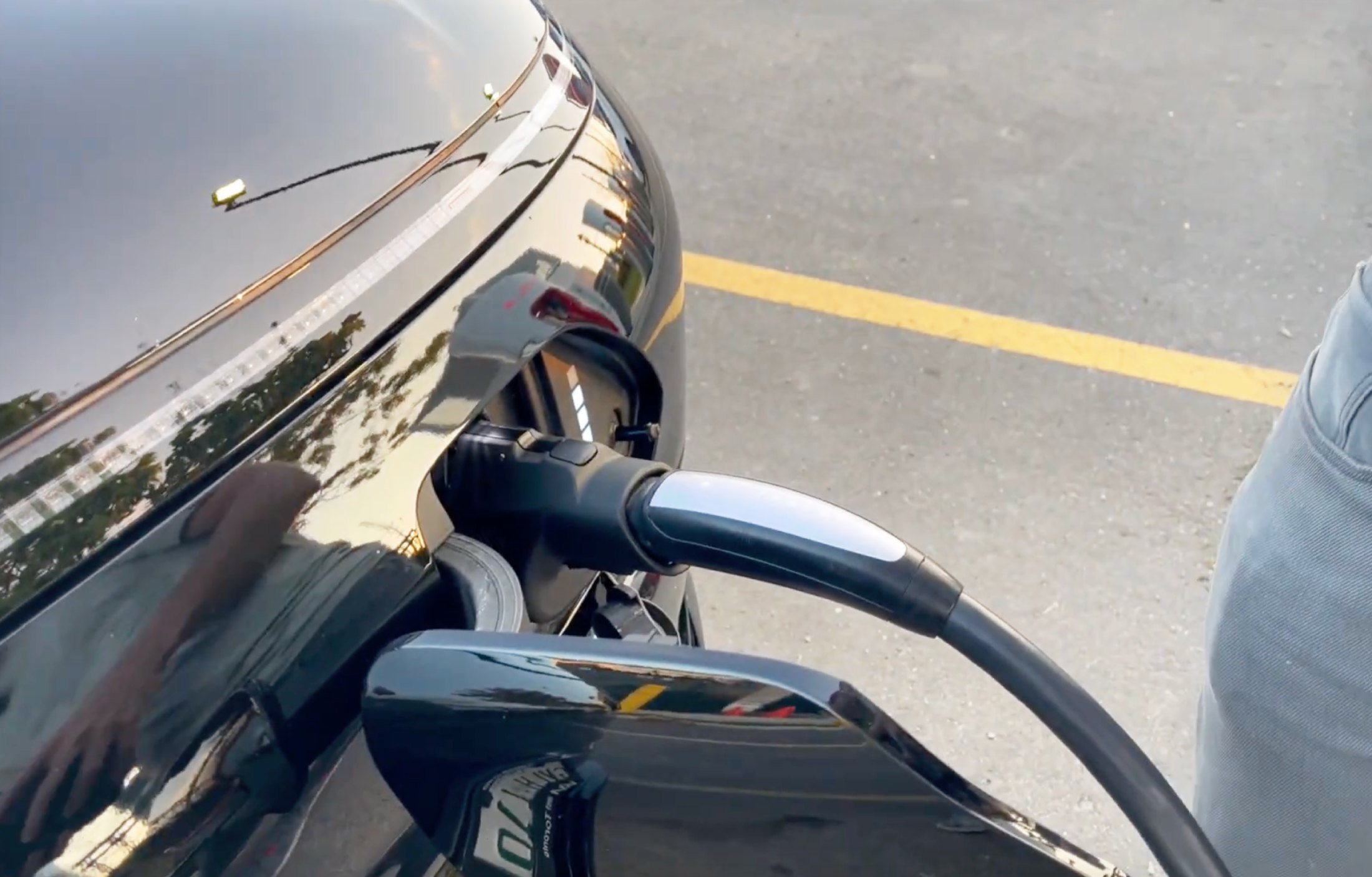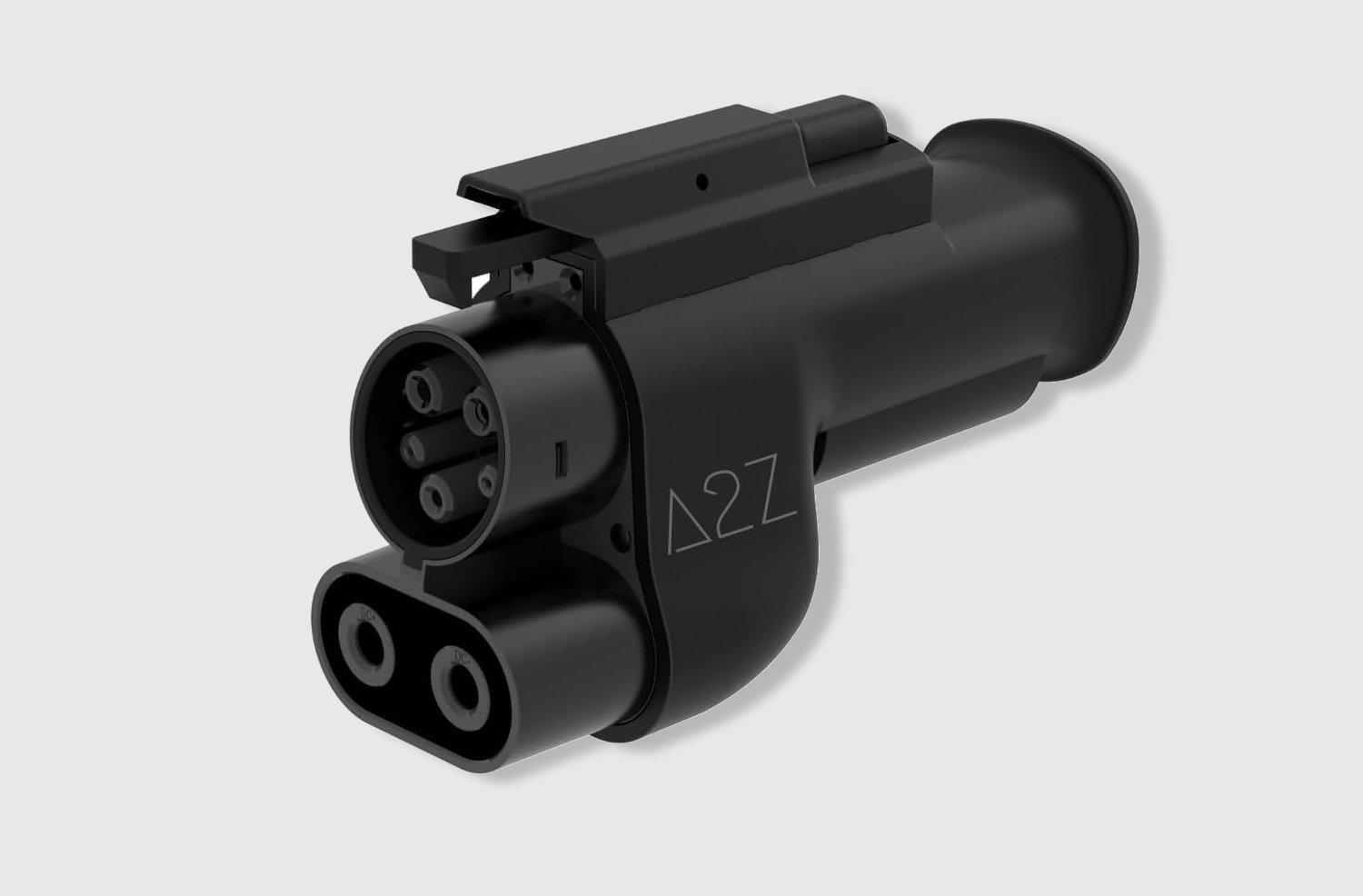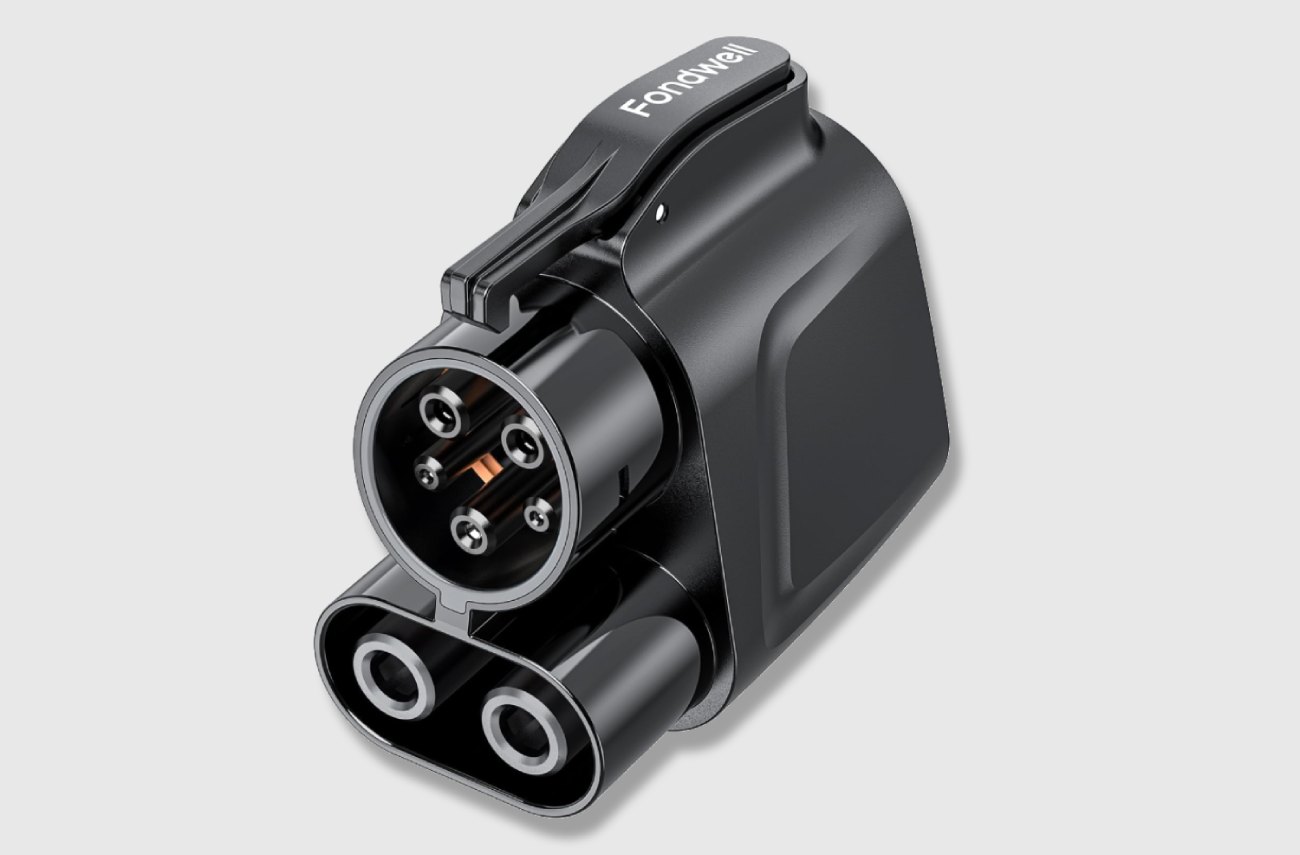EVchargerReviews is supported by our readers. We may earn commissions from links on this page. Why trust us?
Best NACS to CCS1 Adapters – How to charge CCS EVs on Superchargers

Best NACS to CCS1 EV Adapters
Updated June 24, 2025, by Roman Kim
After years of waiting, we are finally in the era of relatively easy access to Tesla Supercharger stations for non-Tesla electric vehicles. It was certainly a slow start in North America, and not all stations are available (so far), but it’s becoming easier for CCS1-port EVs to take long distance journeys. To see if your brand of EV is supported, check this page from Tesla. More vehicle brands are being gradually onboarded all the time.
To take advantage of Tesla Superchargers as a driver of a CCS1-port EV drivers, you are most likely going to need a NACS-to-CCS1 charging adapter. Some automakers sell or provide official adapters to EV buyers for purchase. Below, we’ve compiled the best aftermarket NACS-to-CCS1 adapters we’ve tested or researched.
Why trust us? We have hands-on testing experience with the most popular EV charging products.
LENZ CCS to Tesla Charger Adapter

We’ve been using adapters from LENZ for years, and their latest NACS to CCS1 Supercharger adapter doesn’t disappoint. It feels well made in the hand, and comes with a protective carrying case for storage so it doesn’t gather dust in your trunk.
We’ve tested it with several EVs, including a Chevy Equinox EV that requests up to 500 amps from the Supercharger, and the adapter from LENZ handled the current without even getting very warm.
Specs
- Operating range of -22°F to 122°F
- Includes carrying case
- 2 Year warranty
- Safety certified
- Supports up to 500 V and 500 A
- Complies with UL 2252, adapter specification
A2Z NACS/J3400 to CCS1 Adapter

A2Z is a reputable Canadian company specializing in EV charging adapters and equipment. Their NACS to CCS adapters was among the first products on the market and it’s still one of the best.
This adapter is rated to handle up to 1000 volts, making it a future-proof choice. Although existing Supercharger infrastructure has a max voltage of 500 volts, the J3400 spec supports higher voltages so we are likely to see DC fast chargers with high voltage and NACS plugs in the future.
Specs
- Supports up to 1000 V and 500 A
- IP54 weatherproofing rating
- Aluminum latch
- One year warranty
- Carrying case included
Fondwell NACS to CCS1 Adapter

This adapter from Fondwell is also highly reviewed and often on sale. It matches the other products on this list in terms of capability and durability but comes in a more compact form factor. This can be benefit or a concern, depending on the charging port placement of your EV. Tesla Supercharger cables at V3 stations have very short cables, so a slightly longer adapter can provide more flexibility.
Specs
- Engineered for 10,000+ usage cycles
- 1000V and 500A rated
- High quality T2 copper alloy
- UL 94 V0 fireproof housing
- -22°F to 122°F operating temperature range
What you need to know about charging non-Tesla EVs at Superchargers stations
Supercharger stations are fall into one of the following categories:
- Stations open to all EVs, with “Magic Docks” that have built-in CCS adapters that are released upon session activation. You don’t need to being your own adapter to these Superchargers. However, these locations are the least common. The Tesla app will distinguish between Magic Dock stations and NACS-only cords.
- Stations open to all EVs, but only a NACS cable is provided. You will need to bring your own NACS-to-CSS1 adapter to charge if your EV does not have a native NACS port. These stations are increasingly common. These are typically V3 or V4 Superchargers that can deliver up to 250 kW, if you EV can accept more than 600 amps. But around 150 kW is most common.
- The third category are Superchargers that are still only exclusive to Tesla vehicles. It may be because they are older V2 locations that do not support CCS communication, or simply because Tesla is reserving charging capacity in the area for their own customers. For this reason, it is important to check availability in the Tesla app instead of just showing up at any Supercharger site.
Which non-Tesla EVs are compatible?
Having the adapter and account is not enough. Tesla needs to do work on their end when they onboard a new EV manufacturer to the network. As of this writing, the following brands can charge on Superchargers with a NACS to CCS1 adapter: Ford, General Motors, Genesis, Hyundai, Kia, Lucid, Mercedes-Benz, Nissan, Polestar, Rivian, Volvo. Check this page for the most up to date information.
Do Superchargers support Plug-and-Charge?
Yes, but only with official support from Tesla. At the time of this article, only Rivian and Ford support Plug-and-Charge, meaning you can plug-in the car and the charging session will automatically authenticate. Note though, that you will need to setup billing information in advance. For all other EVs, you will need to manually activate the charging session using the Tesla app. You will need an active Tesla account with a patent method on file, and you’re able to select the individual charging stall and activate manually.
Can I use the Supercharger membership with Plug-and-Charge?
Unfortunately, not at this time. Although Tesla offers a monthly subscription membership for discounted charging rates, it can not be combined with plug-and-charge at this time. If you subscribe to the Supercharger membership, you will need to manually activate you charging sessions. Hopefully, this limitation can be removed in the future.
How does Supercharger kWh Energy Pricing compare to other DC charging networks?
In most regions, Superchargers are comparable to rates offered by Electrify America, EVgo, and IONNA. In some cases, Superchargers undercut the competition on pricing. However, the cheapest rates are available to Tesla car drivers without memberships. Also, note that most Tesla Supercharger stations are priced according to time of day, with the cheapest tiers during off-peak times at night time.
What voltage are Tesla Supercharger stations?
Electric vehicles are be broadly categorized today as 400-volt and 800-volt cars. All Tesla vehicles with the exception of Cybertruck and Tesla Semi are of the 400-volt variety.
The current generation of V3 and V3.5 Tesla Superchargers are using 400-volt architecture. (Technically, they can output up to 500 volts.) Future V4 and beyond Supercharger sites will support higher voltage for even faster charging speeds. But in the meantime, EV designed for 800-volt architecture such as the Ioniq 5 and Porsche Taycan will be charger much slower on Superchargers than on native 800-volt chargers such as Electrify America’s 350 kW dispensers.
What does the future hold for NACS and Supercharger network?
Eventually, the NACS/J3400 charging standard and connector will replace CCS1 in North America. It’s an elegant solution with a smaller connector that is used for both slow AC and fast DC charging. Every major automaker has committed to shipping cars with NACS ports going forward. We can expect more Supercharger sites to open to non-Tesla EVs in the coming years, and other EV charging networks are going to be incorporating a mix of CCS and NACS cords in the coming years. The transition is expected to last a few years, and in the meantime drivers can take advantage of charging stations by getting adapters. Tesla drivers can also benefit from existing CCS charging stations with the opposite CCS-to-NACS adapters.
Why Use Tesla Superchargers?
While there are several good DC fast charging networks in the US and Canada, Tesla Superchargers stand above the rest in terms of reliability and network size. However, most non-Tesla EVs today are still equipped with CCS1 charging ports instead of the NACS (J3400) port popularized by Tesla since 2012.
Why is this a North American problem?
The port/connector situation is a bit less messy in Europe where all cars use another variant of CCS, called CCS2. Therefore Supercharger access was available earlier in Europe. Likewise, the China-specific “GMB” port/connector standard is widely used by all modern EVs in China.
In North America, Tesla shipped electric cars years before the CCS standard was formalized, therefore Tesla had to create their own connector. Because Tesla dominated vehicle sales and network buildout, they had defeated CCS1 in the EV charging format war, forcing everyone else to concede.
